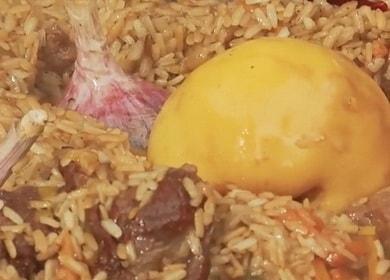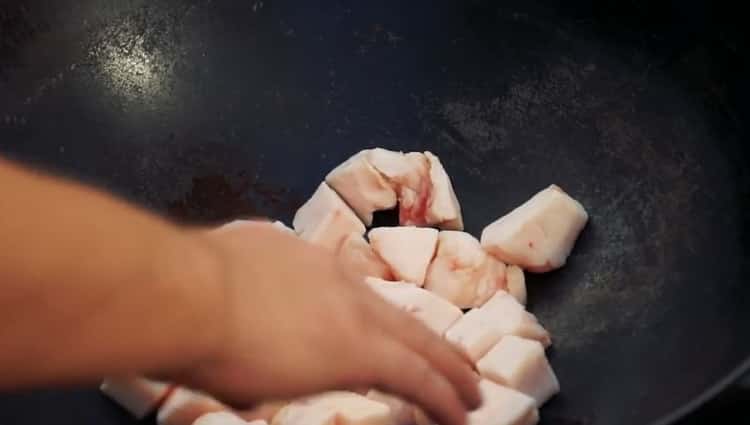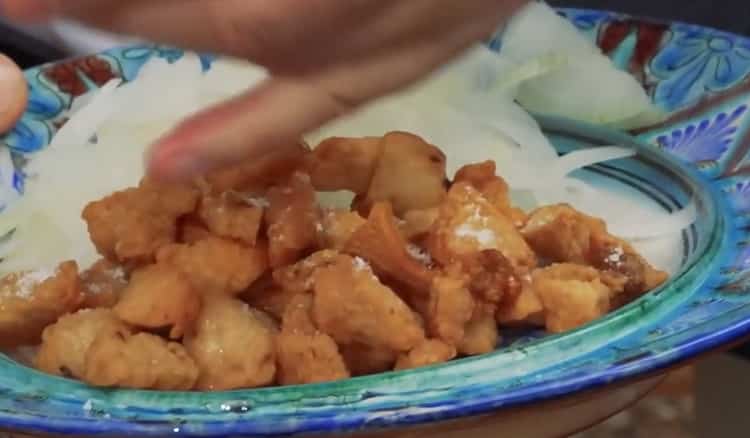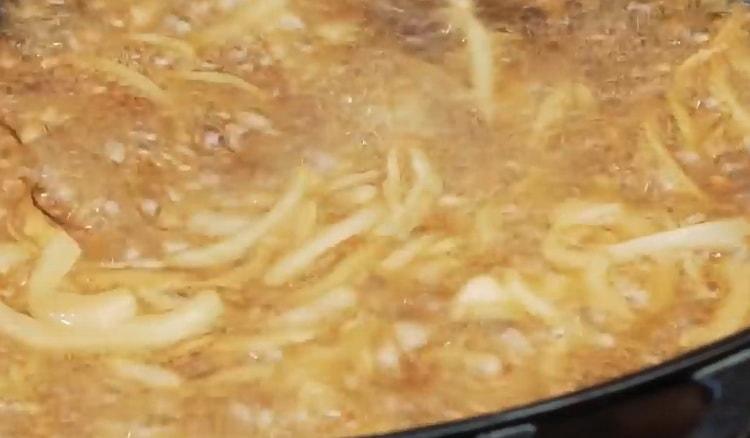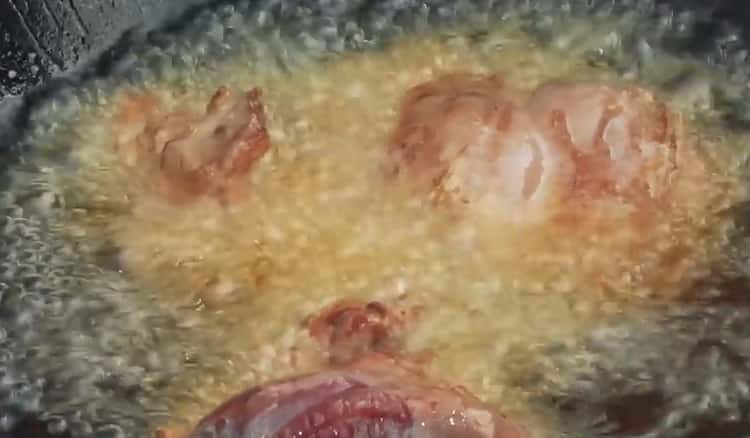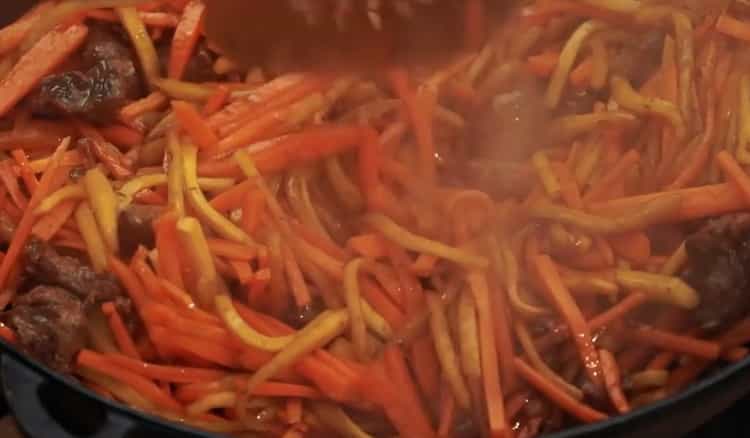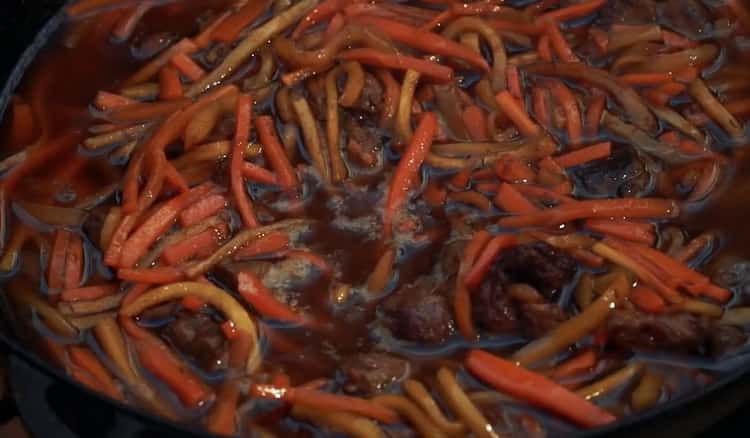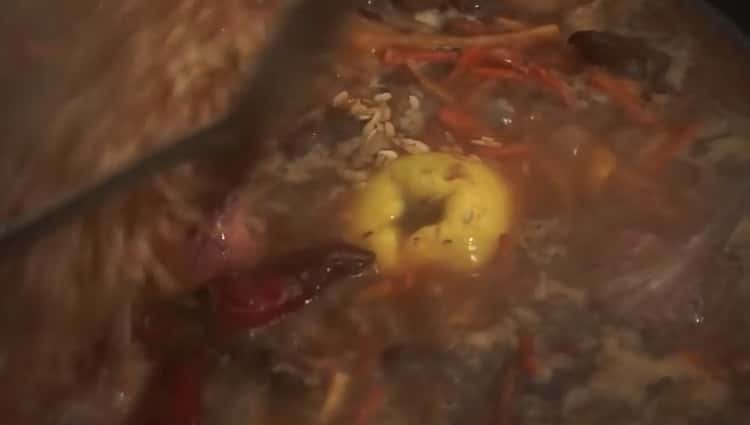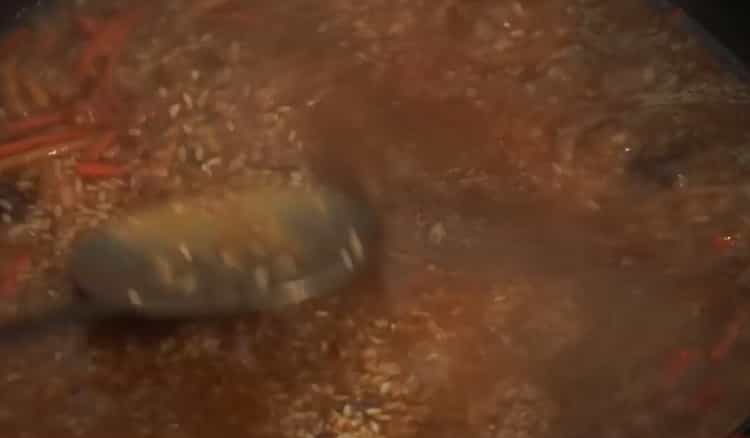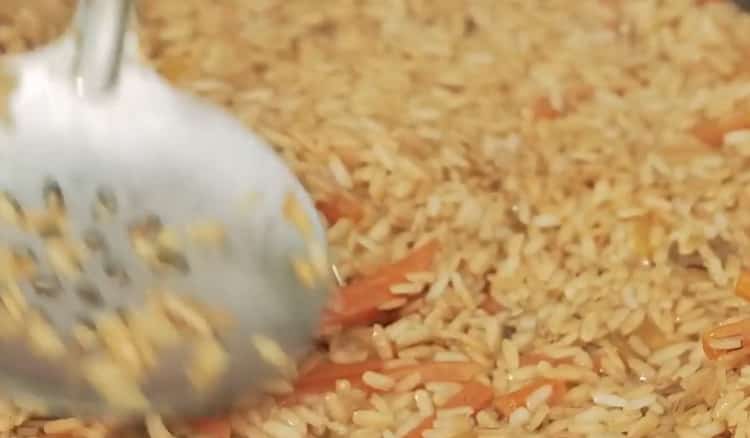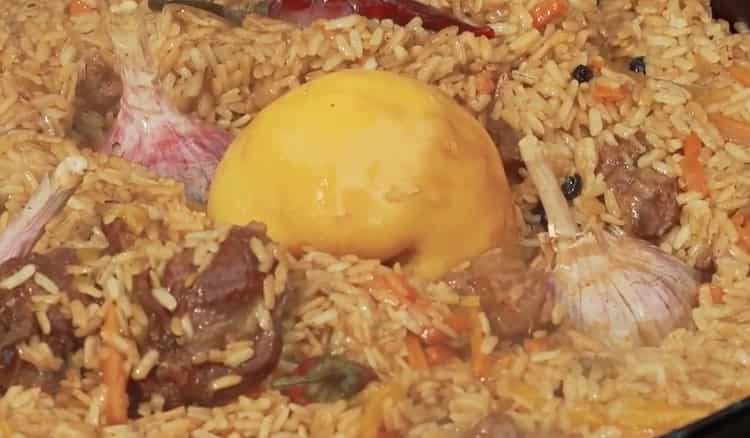Kitchen appliances and utensils:
- large cauldron with a lid;
- skimmer;
- board;
- knife;
- bowls for products.
Ingredients
| Product name | amount |
| Tail fat | 360 g |
| Mutton | 1 kg |
| Vegetable oil (we have cottonseed) | 160 g |
| Dark rice | 1.6 kg |
| Bow | 3 pcs. |
| Carrot | 3 pcs. |
| Zira | 10 g |
| Garlic | 3 heads |
| Red hot peppers (small pods) | 3 pcs. |
| Quince | 1 PC. |
| Water | up to 5 l |
| Salt | taste |
| Barberry | 10 g |
Step cooking
Preparatory stage
- We sort out two packs of rice (only 1.6 kg) and soak in water. Not tap, but immediately in the food!
- We cut into large cubes 360 g fat tail fat.
- Cut the meat: 300 g in large pieces - three in 100 g each is enough. The remaining 700 g is cut into smaller pieces - in large cubes.
- Peel 3 medium onions from husks and cut them into half rings.
- Wash and clean the carrots. You can get by with one of the usual red (orange) carrots, then it will need 3 little things, large. But if you have the opportunity to buy more and yellow, then take one yellow and two red. Cut into strips.
- You do not need to peel the garlic (3 heads), quince (1 pc.) And red hot chilli pepper (3 small pods), just wash it. From garlic we remove only the husk that exfoliates itself.
- We will cook pilaf at the stake. Therefore, before proceeding with the preparation itself, it is necessary to lay a fire over which to place a cauldron. Tongues of flame should literally "lick" the bottom of the cauldron, but very easily, with the tips. Much depends on the uniform heating of the dishes. So, we warm the cauldron and begin to "conjure" over the pilaf itself.
Cooking
- Fat tail fat is sent to the cauldron. Fat should not be heated very quickly, fry or burn, so if the cauldron is very overheated, you can pour a little water into it. It will gradually evaporate, and the fat will melt noticeably slower. The remaining pieces will significantly decrease in volume and simply dry, acquiring a light golden hue. We take them out on a plate and add 160 g of any vegetable oil. Original Ferghana pilaf cooked with cottonseed oil. We give the oily mixture a good glow.

- In preheated fat-fried meat, cut into large pieces. We wait until they are completely covered with a golden crust, and take them out into a bowl.

- Let the fat warm up again and pour the chopped onion. Fry it, stirring, until golden brown. It is important not to overexpose, so that the onion does not begin to darken, so it will lose all its sweetish aroma and give the dish bitterness.

- When the onion becomes a bright golden color, we send meat to the cauldron, cut into small pieces, laying it around the perimeter, around the onion. Now it should not be completely immersed in fat, place it so that it lies on the sides of the cauldron and fry. Any part will plunge into fat anyway, it's not scary. When you notice that the fat stops barking, it means that the meat has started juice. It's time to turn it over. Try again to lay it on the sides, but now it will be more difficult to do. We give the meat the opportunity to fry a little more, then mix.

- The next ingredient will be carrots. If you have two of its types, then first we use the bright one. We send it to the cauldron, add, mix. At this point, you can already start adding seasoning.Pour 10 g of zira. Then we send red carrots to the cauldron and mix again.

- Add to the vegetables the first three pieces of meat that we fried at the beginning and set aside. We leave the meat with vegetables for a while to stew, waiting until the carrots become soft and decrease in volume. Add to the salt so that it feels good. Add water. It will take 2 liters. It is better to boil them beforehand so that you do not have to wait a long time for heating the water in the cauldron, but if this is not possible, then you can pour in the cold.

- Add pilaf flavors: put chilli peppers, unpeeled garlic heads and a whole quince. This is still worth stopping and leaving our semi-finished dish for 40-50 minutes, longer if you are in no hurry. Cover and let it simmer over low heat. Our participation boils down to maintaining a weak fire - we make sure that it does not go out and does not flare up too much. And at this time, very important things will happen in the cauldron: the aromas of all vegetables and meat will be woven into a single gamut of the unique taste of Fergana pilaf.

- After the indicated time, we intensify the fire under the cauldron, bring the liquid to a boil, remove the pepper, garlic and quince from the cauldron and fill in the previously soaked and already quite swollen rice. Having laid out the rice, mix the contents of the cauldron and now add exactly the hot water so that its thickness above the rice surface is approximately two fingers. Further, our task is to maintain the fire in such a state that the liquid is constantly boiling. By the time the rice is ready, he must absorb all the water into himself, and the superfluous by this time should all evaporate.

- During the boil, try the dish on the salt and if necessary (and it will) add. When you notice that the liquid in the pilaf has become too viscous, add 10 g of barberry. Its acid will react with starch, which creates viscosity, and the liquid will again become watery. If you do not have barberry, you can replace it with any other acidic component - tomato, lemon juice or even just citric acid.

- When the water in the pilaf evaporates, and the rice becomes friable, we return the pepper, garlic and quince to it, cover with a lid and leave
insist on 40 minutes. Then you can consider the dish ready and, finally, try it!

Video recipe
We offer you to watch an interesting and very detailed video, which describes every nuance of cooking a delicious and fragrant dish.
Other recipes for pilaf
Uzbek beef pilaf
Uzbek (Samarkand) pilaf
Lamb pilaf in a cauldron
Uzbek Pilaf Pork
